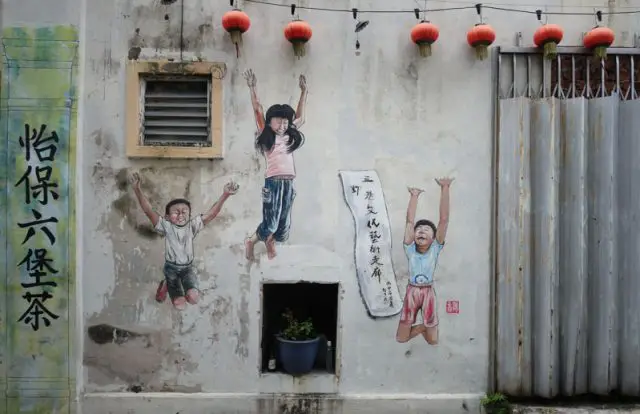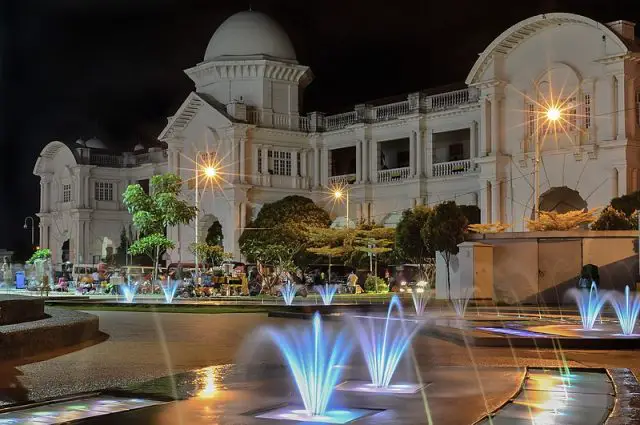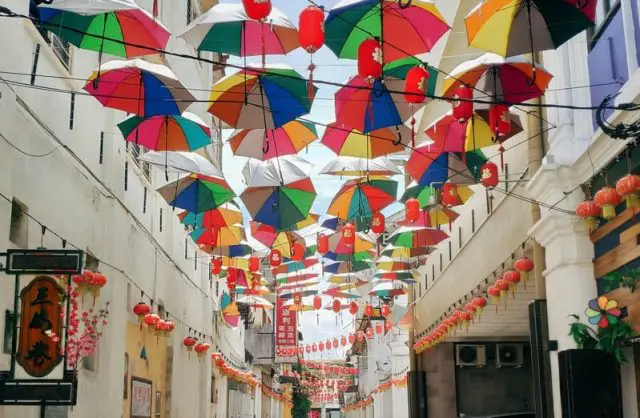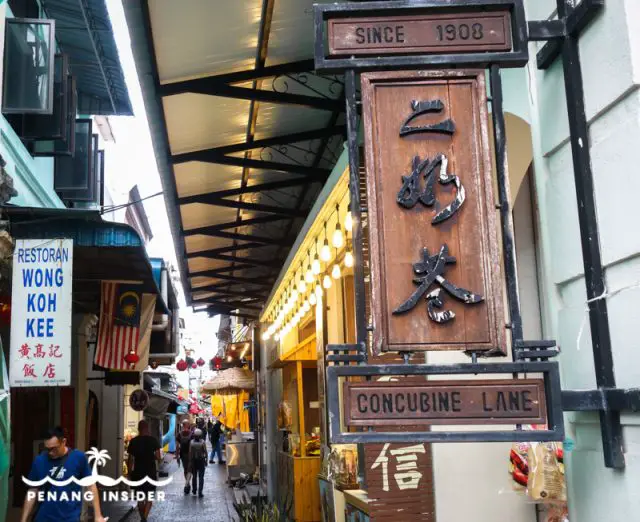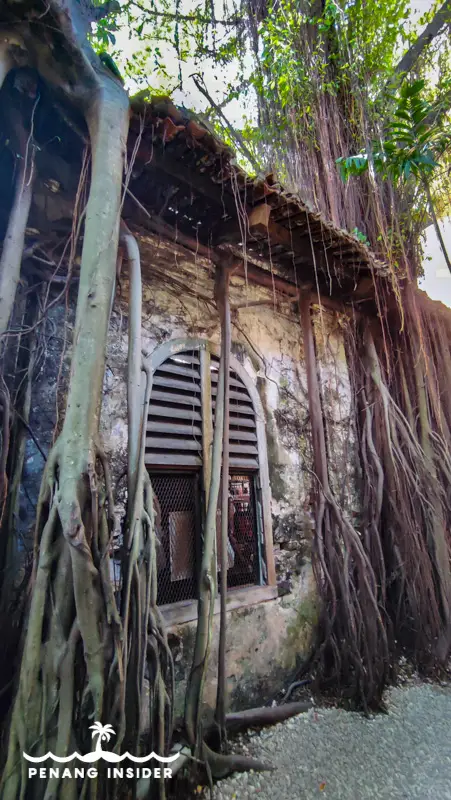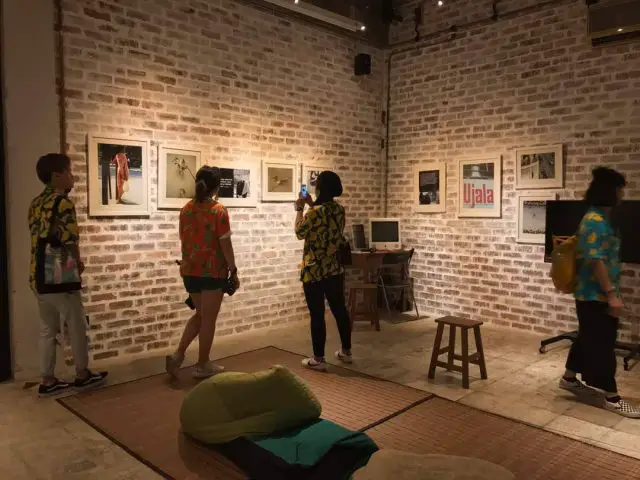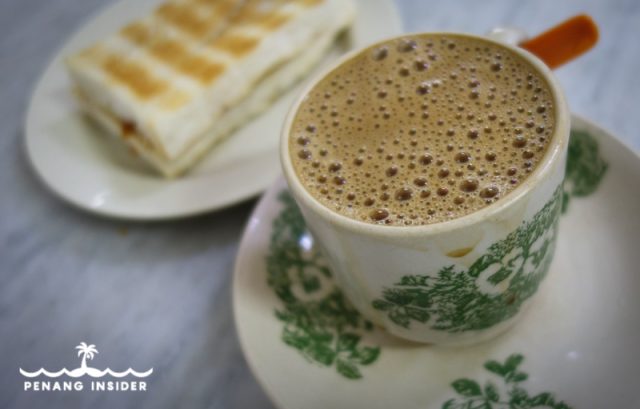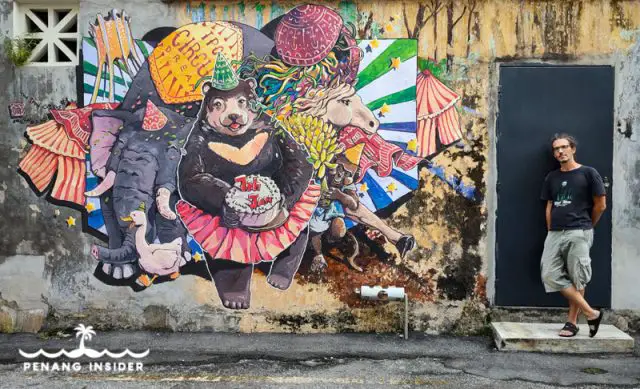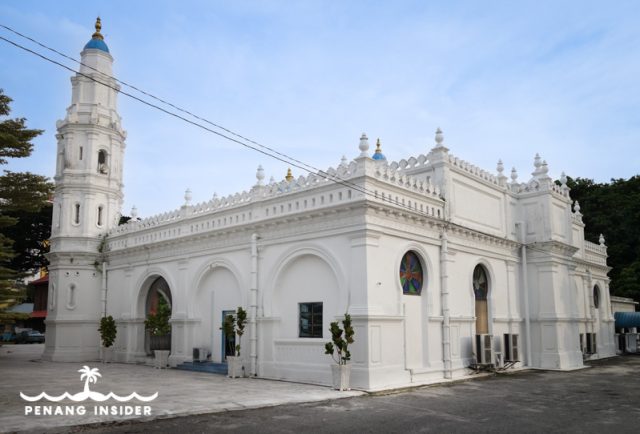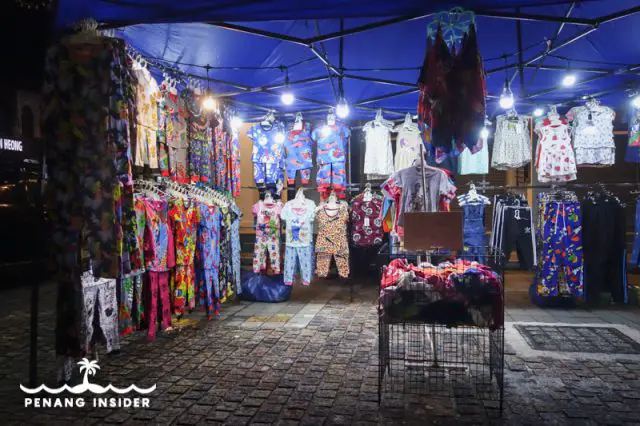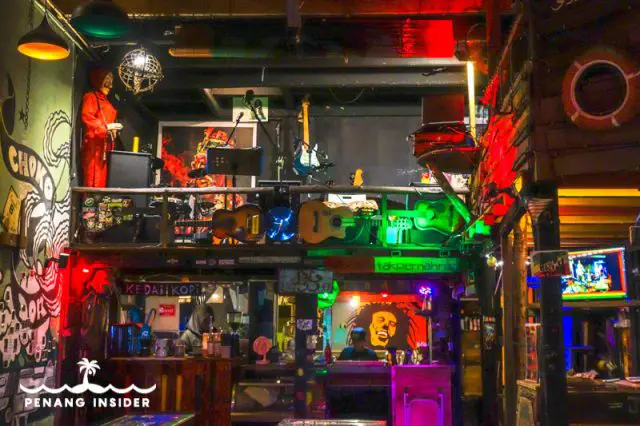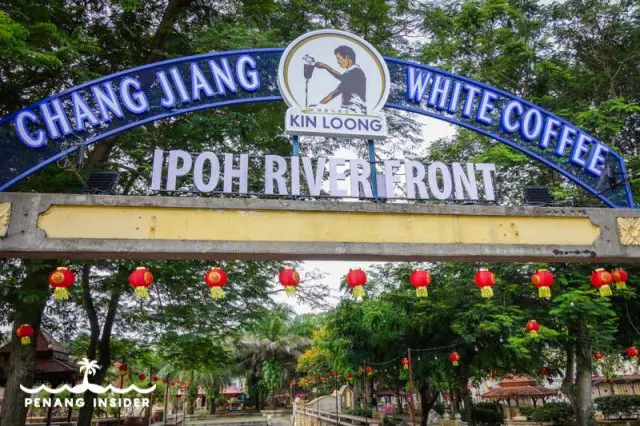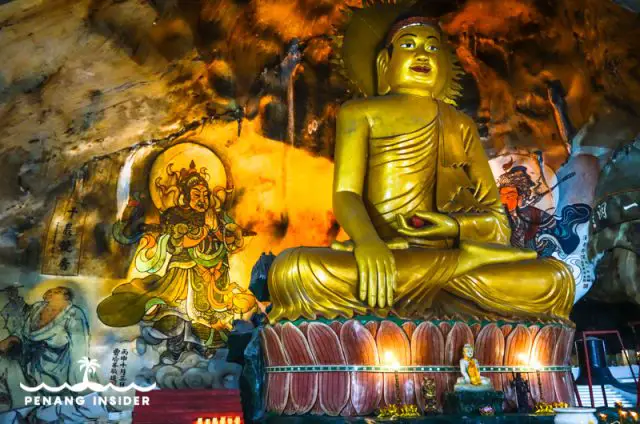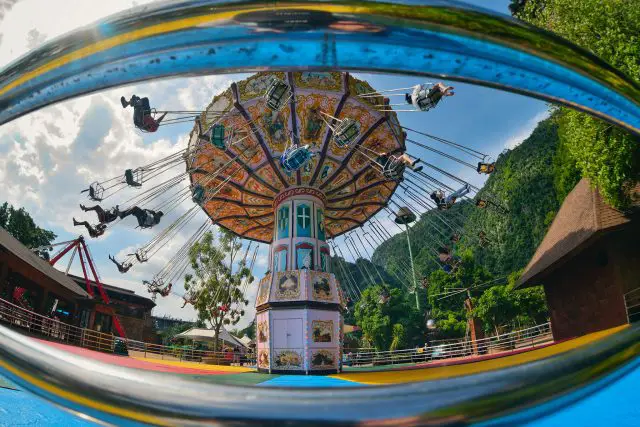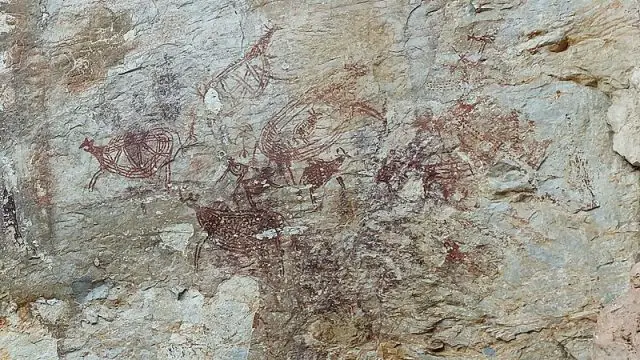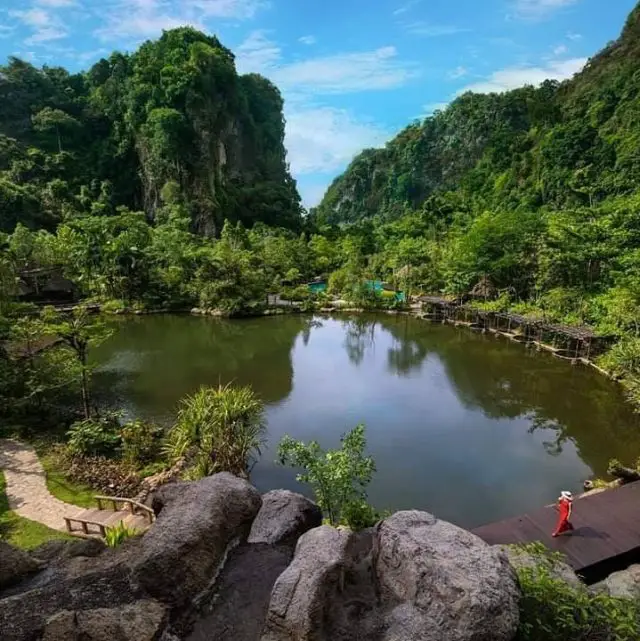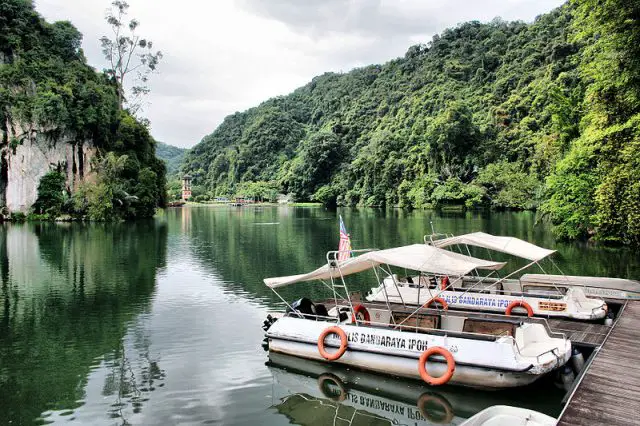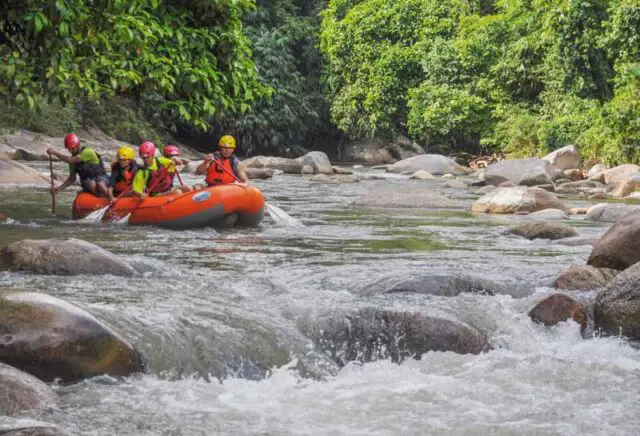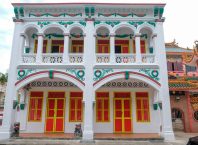When it comes to colonial heritage, Penang Island gets all the praise as the jewel in Malaysia’s crown. However, fewer are keen to admit that it’s also getting back to being overcrowded with too many camera-toting tourists, foodies on a Penang street food rampage, and astute locals who are exploiting the hype of Penang street art and the many Penang cafes to cash in.
Even fewer people seem to know that when Penang’s hustle gets too much to take in, there’s an equally captivating and less visited city to visit.
I’m talking about Ipoh, the former tin-mining center of 1930s colonial Malaysia and the capital of Perak state. Compared to George Town’s boutique and sterile beautification, Ipoh’s Old Town’s quaint streets are still far from mass tourism’s evils.
But what to do in Ipoh? You will not wonder anymore after reading this article. We will tell you about Ipoh’s most interesting places and things to do.
Ipoh Travel Essentials
- Use Klook to get discounts and great deals for many activities around Ipoh. I use it myself all the time.
- If you want to rent an apartment in Ipoh, start by reading my article on Ipoh’s best Airbnbs.
- Ipoh has some great 5-star hotels and inexpensive boutique hotels for a special stay. Check out our guide to the best hotels in Ipoh.
- If you are short on time, consider taking this Ipoh day tour from Kuala Lumpur or this one from Penang.
- If you want a private car to take you around all of Ipoh’s best sights, check out this link
When to Travel to Ipoh
Ipoh lies in the tropical zone and is a destination you can visit year-round, regardless of the rainy season — roughly between September and December. Still, truth be told, it never really rains all day, bringing some respite to the heat.
How to Get to Ipoh
Ipoh is pretty much the midpoint between Penang and Kuala Lumpur and is well-connected by road along the North-South expressway. It’s also possible to arrive in Ipoh by bus and train.
You can book train tickets from Butterworth in Penang to Ipoh, from Kuala Lumpur to Ipoh, or book your bus tickets on 12GoAsia or BusOnlineTickets.
And here you go, the list of the Best Things to Do in Ipoh.
Blogging transparency: this post contains affiliate links. These are products and services that we personally use and recommend. If you click on one and buy any service, I will get a small commission at no extra cost to you. Consider it a small way to say thanks, and keep Penang Insider going.
Best Things to do in Ipoh
Some of the most interesting places in Ipoh are in the Old Town, where you can also find some of Ipoh’s best hotels.
1See Ipoh’s Iconic Train Station
Situated between Kuala Lumpur and Penang, Ipoh is just a two-hour drive from each city and perfectly served by fast and cozy fast train services. Read our guide to catching an ETS train in Ipoh. The exquisite white marble 1935 train station is aptly nicknamed ‘Mini Taj-Mahal’ by locals, for it still boasts original Mughal-inspired architecture. It’s also a great place to arrive in Ipoh because it’s just a quick stroll on foot to Ipoh’s Old Town. Don’t forget an evening stroll in the square facing Ipoh’s Taj Mahal train station for chances to see a colorful fountain light and water show.
2Walk around Ipoh Old Town
Walking from the train station across the field that once served as the Japanese Army’s operation base during the occupation of Malaya between 1941 and 1945, one finds himself in Ipoh Old Town proper. In this cluster of streets sheltered by a bend of the Kinta River, multi-coloured Chinese shophouses lean against each other like sleepy fellows soaking the ebb and flow of slow tropical days.
Nothing seems to have changed how local shopkeepers still tend to their century-old crafts here. Several historical buildings have been upholstered into brand-new boutique hotels, and now travelers have no more excuses to skip Ipoh’s quiet but infectious beat. The Old Town has a series of key streets packed with tourist-oriented trinket shops, but be advised that life winds down early in this part of the time — you won’t find much in terms of food options in the Old Town past 7 pm.
3Visit Ipoh’s Concubine Lane
After Lonely Planet listed Ipoh as one of the best destinations in Asia in 2016, the town spruced itself up and tried to catch up with modern tourist gentrification in the footsteps of George Town on Penang island and Melaka. Concubine Lane today is Ipoh’s version of a touristy alley packed with cafes, food stalls, and souvenir shops, but it preserves a less frenetic, more authentic charm.
There are three Concubine lanes in reality. The history is that after Ipoh was destroyed by fire in 1892, it was rebuilt into lanes of shops. Mining tycoon Yao Tet Shin gave three lanes to his three wives as a gift – each wife would collect rent from the shops in her own lane.
Concubine Lane (二奶巷 in Mandarin, which means “second wife”) is today’s Lorong Panglima, the busiest among the three lanes. Apart from Restoran Wong Koh Kee, most other establishments are new. The beauty is that some houses are restored as they looked in the old days, but the place gets crowded. At night, the lane lights up with red lanterns and resembles a Red-Light district. Try to avoid visiting at weekends and pick a weekday instead.
4 Explore Ipoh’s Market Lane
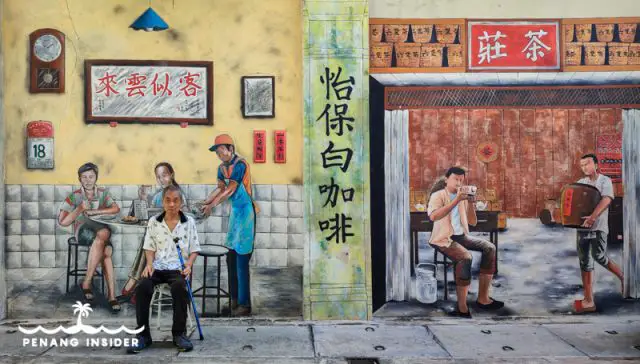
Market Lane, or the Second Concubine Lane (三奶巷 in Mandarin), is very close to Concubine Lane. Don’t be confused by the Chinese characters because Hale Street was the Wife Lane, hence considered the “first”. Concubine Lane was dedicated to the second wife, and this Market Lane to the third wife.
Market Lane is quieter than Concubine Lane and has no shops except for the Nam Chau Coffee Shop with their silky white coffee. But it’s a characteristic lane because of its three iconic street art murals: the coffee shop scene, the kids jumping, and, on the other end of the street, a mural-cum-installation by Ernest Zacharevic – the Lithuanian artist responsible for kick-starting Penang’s gentrification.
In Market Lane, he painted a mural inspired by the unique tricycle uncle of George Town in Penang. Eternally shirtless and barefoot, this man makes a living collecting recycled items in Penang… funny, however, how this character ended up on a wall in Ipoh!
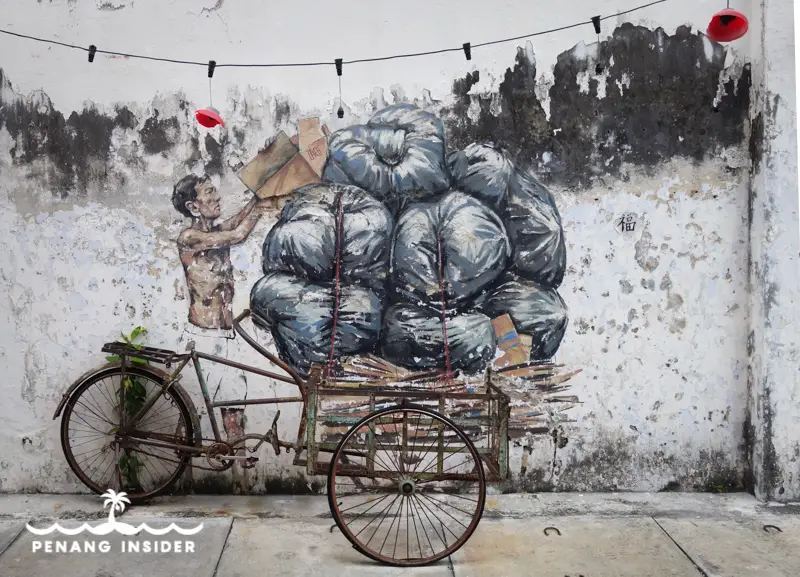
5Kong Heng Square and Artisan Market
The maze of old cobbled lanes that make up Ipoh’s Kong Heng square, right off Concubine Lane, is undoubtedly the most happening part of the Old Town. The area is best known for Kong Heng Artisan Market, a collection of pop-up stalls selling anything from home-grown brands’ collectables, bags, and clothes, and the sky’s the limit.
With its decadent buildings eaten by vines, the whole Kong Heng square is one of Ipoh’s most Instagrammable spots, but the place also has a very interesting history. The main building was built in 1923 and today is occupied by the beautiful boutique hotel Sekeping Hong Keng, with eight rooms, including two hanging glass boxes — a luxe way to experience true shop-house living straight in the Old Town’s pumping heart. Way back when it functioned as the living quarters of a Cantonese opera troupe. They performed in the 1500-seat theatre next door, which today has transformed into a trendy bistro Plan B. This self-proclaimed culture café revamped the building’s original structure using spacious glass and wood fittings, and it’s a great stop for brews and mouthwatering cakes.
Don’t forget to pay a visit to New Star Salon, a vintage barber shop operated by septuagenarian Thirunavu Karusu a/l Krishnan, fondly known as Uncle Thiru. His uncle opened the original barber shop here in 1927, and Thiru followed in his footsteps when he was 13. The only barber chair available has a beautifully engraved metallic footrest and is at least 60 years old. It comes from the old original shop. You can’t find similar chairs around anymore these days.
Here’s a map of Kong Heng Square:
6Learn about Malaysian Cinema at Yasmin at Kong Heng Newseum
The late Yasmin Ahmad, one of Malaysia’s most inventive film and commercial directors, hails from Ipoh. This museum commemorates and celebrates her legacy and work, and it’s unmissable for all those who want to scratch a bit below the surface and see something more meaningful than just souvenirs in Ipoh Old Town. “Yasmin at Kong Heng” was formerly housed in a space along Concubine Lane, but since the Covid-19 pandemic, it’s been moved inside the basement vault of BookXcess Ipoh, which itself occupies the building of a former bank. Come see movie posters and information panels of Yasmin Ahmad’s life and work, and even check through the director’s very own Mac desktop, which still contains the original scripts for her movies “Sepet” and “Wasurenagusa.”
Here’s the location of Yasmin at Kong Heng Newseum:
7Drink Ipoh’s traditional White Coffee
The best and most available drink to start any day in Ipoh’s colonial Old Town is a steamy cup of the local signature brew, Ipoh white coffee. No, the color is not white, and it doesn’t take the name from added milk: the beans for white coffee are roasted only with palm oil margarine, giving the brew a distinct taste. Ipoh’s white coffee is best sipped by rubbing elbows with the next customer amidst the crackling sounds of hawkers’ ladles and sizzling woks. White coffee is the landmark Old Town brew — don’t even think of coming here and not trying a cup.
There are several places that have great white coffee, but the Kopitiam that contends the title of having invented it and making it for more than 80 years is Sin Yoon Loong in Jalan Bandar Timah. The shop is still housed in a traditional Chinese old shophouse and serves great chee Cheong fun, roti bakar, and awesome kaya puffs. Call me a hipster, but whenever I go to Ipoh, I must have at least one breakfast here.
Right opposite on the same street is Kedai Makanan Nam Heong, another great choice for breakfast: besides thick, aromatic white coffee, it bakes fresh egg tarts filled with silky custard. The collection of delicious noodles on offer, including white curry mee, is also must try.
This is Sin Yoon Loong’s location. Right opposite is also Kedai Makanan Nam Heong:
8Try Ipoh Tauge Ayam (Beansprout Chicken)
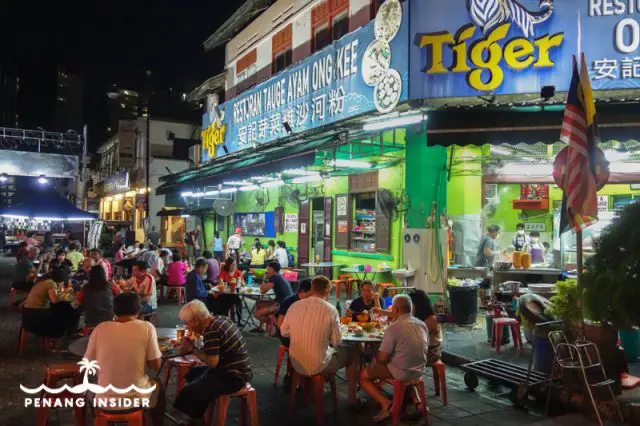
Along the way, one might stumble upon the aroma of bean sprout chicken, or Tauge Ayam in Malay, another local delicacy. Try to find a seat among the locals at mom and pop Restoran Ong Kee at 48 Jalan Yau Tet Shin, which dishes up some of the best in town. Served with noodle soup or rice, tauge ayam here is boiled to perfection and sprinkled with fresh bean sprouts and soy sauce. You should also consider Lou Wong, on the opposite corner from Ong Kee, which is also juicy and popular.
Here’s a location of Ong Kee Tauge Ayam:
9Have a drink at the Sinhalese Bar, one of Malaysia’s oldest
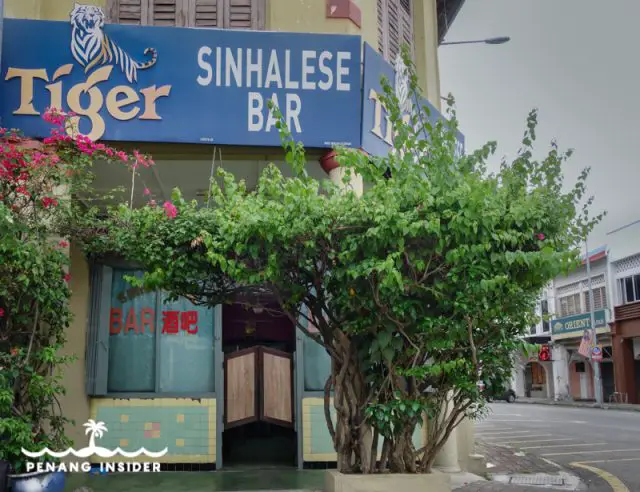
Set in a corner of Ipoh Old Town along Jalan Bijeh Timah, the Sinhalese Bar is a Malaysian institution harking back to 91 years of service. Like the owner, 81-year-old Alfred Perera, this place has seen the transformation of British colonial Malaya, the Japanese invasion, and the transformation into today’s wealthy and fast-developing Malaysia. By going through the Sinhalese Bar’s saloon-like swinging doors and taking a seat inside its bright pink walls, one really time-travels to a liminal space in which booze and colorful local characters intermingle in explosive feasts of great conversations. Absolutely do not miss a drink here, even if you just order a Coke. Perera is a fountain of local knowledge, having lived all his life here.
Here’s a map of the Sinhalese Bar:
10Visit Han Chit Pet Soo, Ipoh’s Hakka Tin-Mining Museum
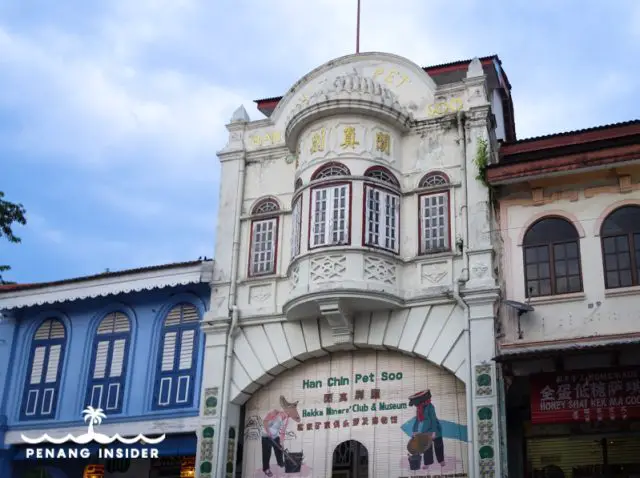
To have a break from all the food, take a tour of Ipoh’s excellent Hakka tin-mining heritage museum. Han Chin Pet Soo offers a peek into the old world charms of a Hakka Chinese clan house. The first floor of this double story “gentlemen club” for tin-miners and tycoons recounts the history of Ipoh’s industrial past. Upstairs, the quirky reproduction of a Chinese gambling and opium den completed with life-sized statues of Fu Manchu-alike punters and their molls is unmissable. Remember that you must make a reservation prior to your visit. Travelers are required to offer a donation, while guided tours pay RM10 per adult and RM5 per child.
Here’s a map of Han Chit Pet Soo:
11Check out Ipoh’s Street Art
Like most Malaysian cities, even Ipoh has its fair share of colourful mural art. Start by checking the walls in Jalan Dato Maharajalela, where Ernest Zacharevic, the Lithuanian artist who started the craze for Penang street art, glorified Ipoh’s signature drink, white coffee. From here starts a treasure hunt for the other six murals that Ernest painted on the Old Town’s walls — including the popular trishaw man in Market Lane.
But there are also many more murals outside the Old Town and across the bridge on the Kinta River along Mural’s Art Lane (Jalan Masjid in Taman Jubilee), a back lane between the major thoroughfare Jalan Sultan Iskandar and Jalan Masjid. There’s a high concentration of beautiful murals along this lane that ends with the historical Masjid Panglima Kinta. Many have been done by art teacher Eric Lai, who launched this project back in 2013. Lai and his students are still taking care of retouching the artwork.
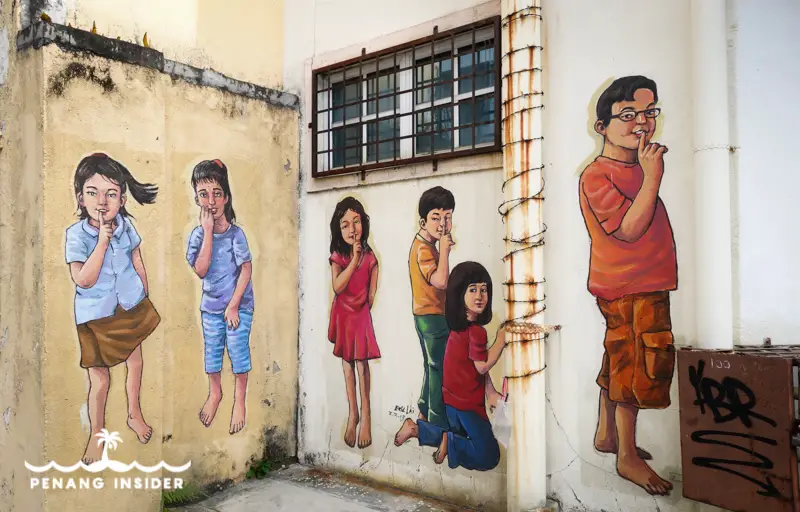
Here’s a map of Ipoh’s Mural Art Lane:
12Visit the Panglima Kinta Mosque
This old mosque’s blue dome and white hue have served the Malay community of Kampung Kuchai and surrounding neighborhoods for over a century. It was built in 1898 in rectangular form, about 40 meters in length and 25 meters in width, with a prayer squarish prayer hall enclosed with a two-tiered pyramid roof. Set on the side of the Kinta River and at the beginning of the lane that today is Ipoh’s Mural Art Lane, it’s a city landmark you should not miss.
Here’s a map of Panglima Kinta Mosque’s location:
13Hunt for vintage bargains at Memory Lane Market
Vintage lovers and collectible seekers should better know that on Sundays, Ipoh’s Jalan Horley is home to one of the best open-air flea markets in the country. Called Pasar Karat, or Loken, by locals, Memory Lane Market opens every Sunday from 7 am until noon in Jalan Sultan Abdul Jalil near Ipoh Parade shopping mall. It’s a fantastic spot to find old memorabilia, such as old home telephones, vintage vinyl records, collectible telephone cards, stamps, and even old-world items such as heavy copper irons.
Here’s a map of Memory Lane Market:
14Shop until you drop at Gerbang Malam Ipoh
There’s more market excitement in Ipoh when stalls pop up every night at the Gerbang Malam, not far from the Old Town, from about 6 pm until midnight. This is more of a second-hand and cheap goods market, packed with street food and clothing such as jeans, t-shirts, sandals and shoes, and watches. It’s a great way to spend some time browsing the streets of Ipoh city at night when things get quiet quickly.
15Check the Pulse of Ipoh’s underground at Chokodok Reggae House
The easiest place to meet up with an unconventional, youthful side of Ipoh is visiting the Chokodok Reggae Bar and Backpackers Hostel. Run by Wira Malik, a Muslim Rastafarian who’s been around the world and married a Japanese wife. This may be the only rasta bar without alcohol on the globe.
But the fruit juices, shakes, and western food are not the only reasons to come here: from 9 pm, there is an open stage and live music performances by a resident band and touring musicians, and it’s a favorite mainstay for local artists and creatives. The Backpacker’s lodge upstairs is currently limited due to premises renovations, but it should be back soon.
Here’s a map of Chokodok Reggae House’s location:
16Take a night stroll at Kinta River Front
A walk along the Kinta River Front under LED-glowing trees is an interesting way to experience Ipoh’s nightlife along the river. Two rows of restaurants and cafes offer many Malay, Chinese and fusion dishes in a relaxed environment where it’s easy to mingle with chatty locals.
Here’s a map of the main Kinta River Front location:
Ipoh Attractions outside the Old Town
If you thought all you could do in Ipoh lies in the Old Town, you are very wrong. These are some of Ipoh’s other unmissable things to do.
17Marvel at Ipoh’s Cave Temples
Set inside limestone massifs covered in viridian tropical vegetation, Ipoh’s Cave Temples are some of the most unique in Malaysia and even the whole of Southeast Asia.
We have covered a list of the eight best Ipoh cave temples, but if you are short on time, the three unmissable are the Perak Cave Temple, Sam Poh Tong, and Kek Lok Tong. Perak Cave Temple is famous for its beautiful entrance, a symmetrical Chinese temple gate set at the bottom of the limestone massif Gunung Tasek. The main hall hosts a 40-foot-tall golden seated Buddha flanked by four guardian deities. The beauty of this cave is also the giant wall murals depicting characters from Chinese mythology and Buddhist scriptures.
Behind the main altar, there’s a flight of steps that, after passing through the upper recesses of the cave, brings visitors up and out on the top of the limestone hill.
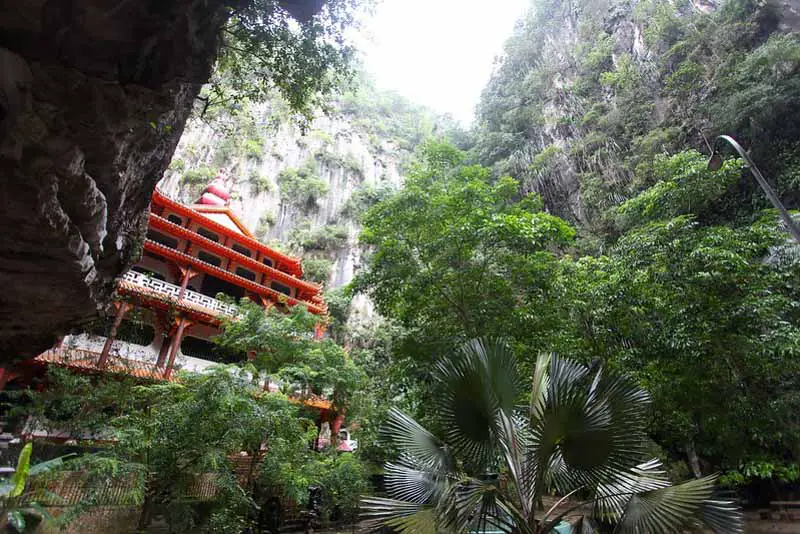
Sam Poh Tong is the second most-known Ipoh cave temple and the most important in the cluster of cave temples situated within the Gunung Rapat area to the southeast of Ipoh and on the way to Gopeng. Its main feature is inside and beyond a tunnel, where the cave temple opens into a gap in the limestone with a stunning red Chinese pagoda set in front of a turtle pond.
Always in Gunung Rapat is Kek Lok Tong temple. The entry is via a path that immerses into the cave, tall enough to house a small building filled with statues of Taoist deities. In the middle of the cave, a staircase leads visitors through a narrower tunnel that hosts Buddhist statues and opens once again onto a beautifully landscaped garden with a pond (you can ride paddle boats here) encased by walls of limestones topped by viridian vegetation.
18Go wild at Lost World of Tambun
Bring your kids to the Lost World of Tambun, one of Malaysia’s largest and ultimate water-theme parks sits on the outskirts of Ipoh, surrounded by tropical jungle, natural hot springs, and limestone features that date back to 400 million years ago.
Prepare for an array of activities, from water slides and water park, an amusement park, the educational Tin Valley on Ipoh’s history as a former tin powerhouse, healing hot springs baths, and an animal petting zoo. We don’t really endorse it, but there is also Tiger Valley, a tiger reserve with two daily feedings at 3 pm and 4 pm.
You can choose a day theme park admission ticket or the Lost World Hot Springs Night Park. If you book via our partner at Klook, you can save 20RM off each ticket! You can select what ticket you need on KLOOK here.
Here’s a map to the Lost World of Tambun:
Coming with family from Kuala Lumpur? Check out this direct private charter from Kuala Lumpur to Lost World of Tambun.
19Explore forgotten history at Tambun Rupestrial Art Site
One of the most important albeit sadly forgotten historical sites in Ipoh is hidden at its outskirts, in the village of Tambun. Discovered in 1959 by a British soldier, Gua Tambun is a limestone hill with rupestrian art that dates back to 3,000 years. The rock face here presents reddish drawings of human figures, a tortoise, what seems to be a dugong – Southeast Asia’s peculiar dolphin-alike mammal – a deer, and sketches that resemble arrows, fish, and even an octopus. Fragments of seashells and peculiar sedimentation of the rock face suggest that this area may have been covered by water in the past.
Regardless of the site’s archaeological importance, it’s puzzling to note that it’s not at all preserved: it’s not easily accessible as its entrance is on private land, and the rock face has been vandalized by graffiti. A group from Universiti Sains Malaysia in Penang is doing what it can to preserve the site and get help from the government for restoration work, but development is slow. If you decide to visit, pay attention to where you tread. Anything on the soil is potentially an unprotected archaeological remain that too many callous visitors have already damaged irreparably.
20Rejuvenate in style at Banjaran Hot Springs Retreat
If you want to soak in the piece of Kinta Valley’s ancient rock formations, then a pampering stay at Banjaran Hot Springs Resort is what you need. The centrepiece is a free-form swimming pool surrounded by beautiful thatched pavillions and accommodations. Viridian walls of rock shelter the place on all sides, and believe it or not, you may isolate yourself in a meditation cave, try a thermal bath in a steam cave, and enjoy geothermal hot springs dipping pools. It’s very close to the Lost World of Tambun, too.
Interested? You can book a stay on Booking.com or Agoda.
If you don’t want to stay overnight, you can buy a Banjaran Hot Springs Day Pass on KLOOK.
Here’s a map of the Banjaran Hot Spring Retreat
21Get out and about at Gunung Lang Recreational Park
Tucked to the north of Ipoh, in close proximity to the North-South Expressway, is the area of Gunung Lang Recreational Park. A large 14 hectares lake shimmers in the middle of 30 hectares of rainforest, surrounded by the soaring limestone hills of Gunung Lang and Gunung Bilike. It is part of the Kinta Geopark and a perfect sample of Malaysia’s beautiful nature on the doorstep of Ipoh.
You can drive here and marvel at man-made cascading waterfalls, walk along a 2-km-long boardwalk over a swamp, bring your children to a playground, and even use the campsite. There are also several other possible activities, like fishing, jungle trekking, and canoeing on the lake.
22Travel back in time to Qing Xing Ling Leisure and Cultural Village
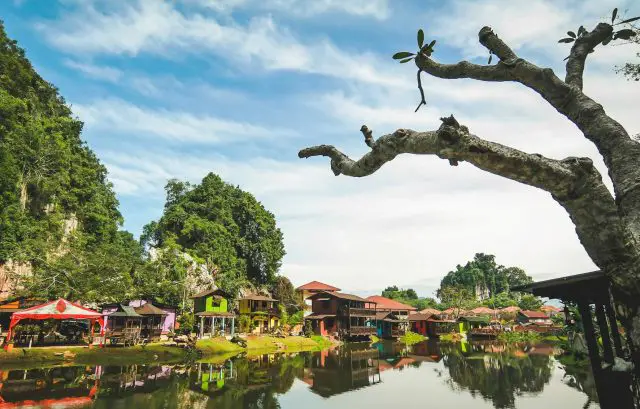
Gunung Rapat holds some of Ipoh’s most amazing cave temples and this interesting cultural village.
“Qing Xing Ling” means “Serene Hill” in English and is tucked under a towering limestone massif. The concept here is to give a fairy-tale impression of life in an old traditional village. Traditional houses cluster on the sides of a speckle of water, and right upon entering, you’ll find old-world trishaws that can be rented to get around the park in a unique old-world fashion.
A large banyan tree holds hundreds of wishing ribbons, and a hiking trail called “Memory Lane,” strewn with mini-windmills and statues, goes uphill in the limestone and back in time to 1980s Malaysia.
Here’s a map of Qing Xin Ling village:
Places to visit outside of Ipoh town
If you have a few days in Ipoh, you could easily base yourself in the city and take a few day trips further into the Kinta Valley. The following are some of the most interesting attractions near Ipoh.
23Spook yourself out at Kellie’s Castle
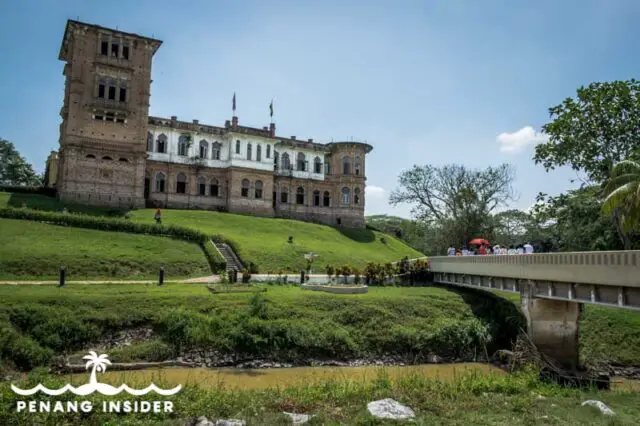
Situated halfway between the Perak adventure sports capital of Gopeng and the town of Batu Gajah, both not far from Ipoh, Kellie’s Castles is a quirky sight in Malaysia — and one that has a reputation for hantu — ghosts, in the Malay language. Built by a Scottish planter, William Kellie-Smith, Kellie’s Castle is an unfinished European-styled manor that mixes South Indian Tamil architecture and is set next to the Raya River in lush tropical surroundings. Locals say that Kellie built this manor either as a gift to his wife or to celebrate the birth of his son in 1915. In the original plan, the castle should have had Malaysia’s first elevator, an indoor tennis court, and a rooftop courtyard for nightlife and entertainment.
But something strange started happening during construction: many among Kellie’s team of Indian workers started dying of a bad case of Spanish Flu. Worried they may have attracted the wrath of some god, Kellie’s men asked him permission to build an Indian temple nearby — to which the Scot promptly agreed. The pandemic and the deaths stopped shortly after the temple was erected, and Kellie was immortalized as a statue among the Hindu Gods on its roof.
The castle, however, was never finished because Kellie died of pneumonia while away in Portugal in 1926. Devastated, his wife decided to return to Scotland, leaving everything unfinished. Today Kellie’s Castle is a tourist attraction, and some say ghosts haunt it. You can experience this history on a Kellie’s Castle Paranormal Tour, which brings guests through the empty hallways and rooftops of the manor.
24Go spelunking at Gua Tempurung
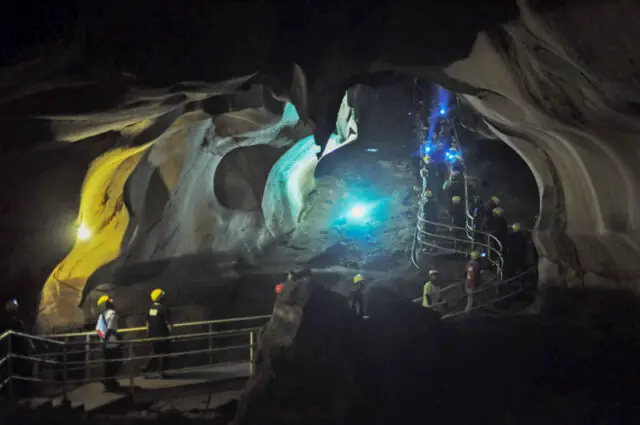
Take a day trip to Gua Tempurung, one of Perak’s biggest caves, and a real adventure.
If you go to Gopeng, you shouldn’t miss a trip to Gua Tempurung, one of Peninsular Malaysia’s oldest and most stunning caves, estimated to be a stunning 400-millions-year-old. Gua Tempurung is divided into 5 different caverns filled with stalagmites and stalactites, and being more than 3 kilometers long, it is a perfect place for all levels of adventure caving expeditions. For the same reason — huge, dark, and scary chambers — Gua Tempurung was also used as a hideout by the Communist insurgents of the Malayan Emergency between 1948 and 1960.
Today the cave is very popular among spelunkers who come in droves to try one of four different exploration packages. Expect to get wet and dirty as you trawl through wide and narrow passages and chambers filled with the tweeting of bats and sloshing of an underground river.
25Go Whitewater rafting and explore Gopeng
Gopeng is a Perak attraction that’s definitely off the beaten track, but for no good reason. Set only 20km south of Ipoh and about 2 hours drive north of Kuala Lumpur, Gopeng was one of Malaya’s prominent tin-mining centers. Few things have stayed on from those times. Still, the town is set next to Peninsular Malaysia’s most stunning limestone cave systems and the Kampar River, one of the best white water rafting spots in the whole of Peninsular Malaysia.
Gopeng town also had a strong Chinese community whose immigration history reflected in the town’s architecture, heritage, and, of course, Gopeng food — lai fun noodles, anyone?
You should go to Gopeng if you want to experience a remote small Malaysian town with excellent tourist facilities — from good hotels to white water rafting and adventurous activities such as caving, hiking, and abseiling.
READ MORE — Best Things to Do (and Eat) in Gopeng
YOU MAY ALSO LIKE
Best Hotels in Ipoh
How to catch an ETS train from Ipoh
Guide to Ipoh cave temples


